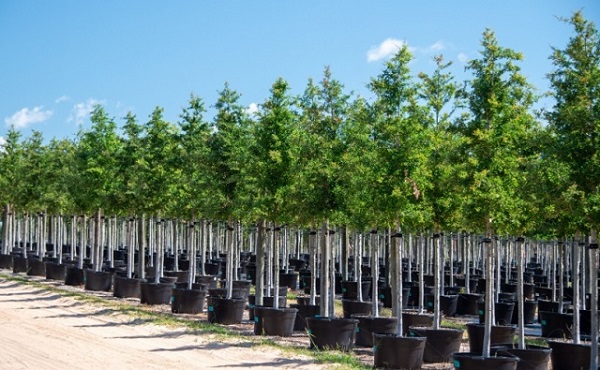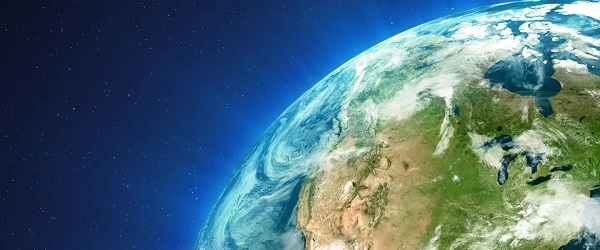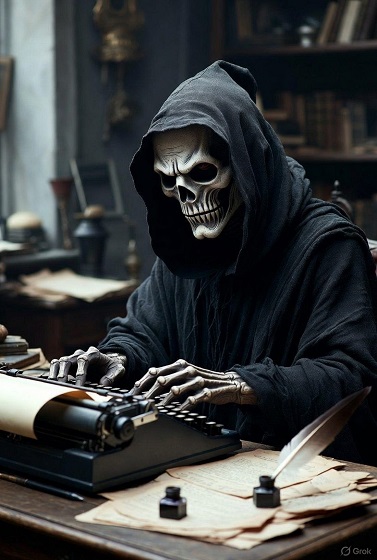Environment
Trudeau gov’t admits goal to plant 2 billion trees in 10 years is unrealistic, way behind schedule

From LifeSiteNews
According to a memo from the Department of Natural Resources, the plan was a marketing ploy designed to inspire commitment and participation, but only about a fifth of the trees will be in the ground by 2031.
A 2019 environmentally ideologically charged scheme by the Liberal government of Prime Minister Justin Trudeau to plant two “billion trees” in a 10-year span was a scheme, according to a memo.
As noted by Blacklock’s Reporter, the memo from Canada’s Department of Natural Resources admitted that the Trudeau cabinet’s plan from 2019 for “two billion trees” was nothing more than a marketing slogan.
The memo, dated February 15, titled Two Billion Trees Questions and Answers, noted that the government “sought a name that would inspire that commitment and participation,” and that “so far that has worked.”
Trudeau’s tree planting scheme is well behind schedule, and the reality is by 2031 only about a fifth of two billion trees will even be planted.
The memo stated that as of today the government has “signed or is in the process of negotiating agreements that will result in 393 million trees planted by 2031.”
“We are actively engaged with all partners on how to move ahead,” it reads.
The department even acknowledged that when it comes to tree planting, it is an overly complex process, as trees cannot just be planted anywhere. “Different species and sizes of trees are required in different planting projects across the country,” it said.
While the government claims that it will plant two billion trees, there has been no timeline for when this will be achieved. The process of “planting a tree takes several years and includes steps like collecting seeds, increasing nursery capacity, growing seedlings until they are large enough to be planted in the ground and identifying available land.”
The Trudeau government had said that the tree-planting scheme would cost $3.16 billion overall. However, a 2021 report Financial Support for Planting Two Billion Trees noted that the actual costs are more than double, or $5.94 billion.
Many have pointed out that Canada already has 318 billion trees and the number is growing thanks to forestry companies who plant 600 million trees every year, which is well more than they cut down.
Business
Canada is failing dismally at our climate goals. We’re also ruining our economy.

From the Fraser Institute
By Annika Segelhorst and Elmira Aliakbari
Short-term climate pledges simply chase deadlines, not results
The annual meeting of the United Nations Conference of the Parties, or COP, which is dedicated to implementing international action on climate change, is now underway in Brazil. Like other signatories to the Paris Agreement, Canada is required to provide a progress update on our pledge to reduce greenhouse gas (GHG) emissions by 40 to 45 per cent below 2005 levels by 2030. After decades of massive government spending and heavy-handed regulations aimed at decarbonizing our economy, we’re far from achieving that goal. It’s time for Canada to move past arbitrary short-term goals and deadlines, and instead focus on more effective ways to support climate objectives.
Since signing the Paris Agreement in 2015, the federal government has introduced dozens of measures intended to reduce Canada’s carbon emissions, including more than $150 billion in “green economy” spending, the national carbon tax, the arbitrary cap on emissions imposed exclusively on the oil and gas sector, stronger energy efficiency requirements for buildings and automobiles, electric vehicle mandates, and stricter methane regulations for the oil and gas industry.
Recent estimates show that achieving the federal government’s target will impose significant costs on Canadians, including 164,000 job losses and a reduction in economic output of 6.2 per cent by 2030 (compared to a scenario where we don’t have these measures in place). For Canadian workers, this means losing $6,700 (each, on average) annually by 2030.
Yet even with all these costly measures, Canada will only achieve 57 per cent of its goal for emissions reductions. Several studies have already confirmed that Canada, despite massive green spending and heavy-handed regulations to decarbonize the economy over the past decade, remains off track to meet its 2030 emission reduction target.
And even if Canada somehow met its costly and stringent emission reduction target, the impact on the Earth’s climate would be minimal. Canada accounts for less than 2 per cent of global emissions, and that share is projected to fall as developing countries consume increasing quantities of energy to support rising living standards. In 2025, according to the International Energy Agency (IEA), emerging and developing economies are driving 80 per cent of the growth in global energy demand. Further, IEA projects that fossil fuels will remain foundational to the global energy mix for decades, especially in developing economies. This means that even if Canada were to aggressively pursue short-term emission reductions and all the economic costs it would imposes on Canadians, the overall climate results would be negligible.
Rather than focusing on arbitrary deadline-contingent pledges to reduce Canadian emissions, we should shift our focus to think about how we can lower global GHG emissions. A recent study showed that doubling Canada’s production of liquefied natural gas and exporting to Asia to displace an equivalent amount of coal could lower global GHG emissions by about 1.7 per cent or about 630 million tonnes of GHG emissions. For reference, that’s the equivalent to nearly 90 per cent of Canada’s annual GHG emissions. This type of approach reflects Canada’s existing strength as an energy producer and would address the fastest-growing sources of emissions, namely developing countries.
As the 2030 deadline grows closer, even top climate advocates are starting to emphasize a more pragmatic approach to climate action. In a recent memo, Bill Gates warned that unfounded climate pessimism “is causing much of the climate community to focus too much on near-term emissions goals, and it’s diverting resources from the most effective things we should be doing to improve life in a warming world.” Even within the federal ministry of Environment and Climate Change, the tone is shifting. Despite the 2030 emissions goal having been a hallmark of Canadian climate policy in recent years, in a recent interview, Minister Julie Dabrusin declined to affirm that the 2030 targets remain feasible.
Instead of scrambling to satisfy short-term national emissions limits, governments in Canada should prioritize strategies that will reduce global emissions where they’re growing the fastest.

Elmira Aliakbari
Environment
The Myths We’re Told About Climate Change | Michael Shellenberger

Why is it, I asked him, that Bill Gates recently rejected “doomsday” predictions and started calling for a more pragmatic, human-centered approach?
From rising sea levels to surging forest fires to dying polar bears to disappearing coral reefs, much of what we’ve been told about climate change is not true, he says.
The rising sea level narrative, for example, rests entirely on computer models that were manipulated to produce the desired outcome, Shellenberger says.
“It’s clear that the activist scientists were manipulating models to show an acceleration in sea level rise when the only long-term, reliable source of data, which is called tide gauge data…shows no acceleration from the 1850s on,” he says.
How is data cherry-picked or skewed to create misleading narratives? What’s behind the sudden embrace of nuclear energy—after it had been demonized for decades? How might it be related to the global AI race?
-

 Health1 day ago
Health1 day agoTens of thousands are dying on waiting lists following decades of media reluctance to debate healthcare
-

 Opinion1 day ago
Opinion1 day agoLandmark 2025 Study Says Near-Death Experiences Can’t Be Explained Away
-

 Carbon Tax1 day ago
Carbon Tax1 day agoCarney fails to undo Trudeau’s devastating energy policies
-

 International2 days ago
International2 days agoCanada’s lost decade in foreign policy
-

 Business1 day ago
Business1 day agoBudget 2025: Ottawa Fakes a Pivot and Still Spends Like Trudeau
-

 armed forces2 days ago
armed forces2 days agoCanada At Risk Of Losing Control Of Its Northern Territories
-

 Alberta2 hours ago
Alberta2 hours agoPremier Smith explains how private clinics will be introduced in Alberta
-

 Focal Points1 day ago
Focal Points1 day agoSTUDY: TikTok, Instagram, and YouTube Shorts Induce Measurable “Brain Rot”







